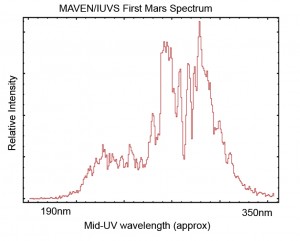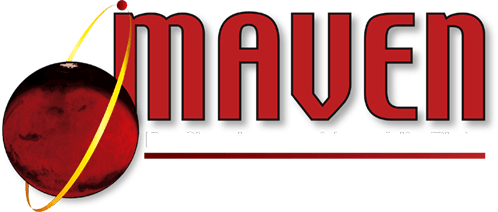
MAVEN continues on a smooth journey to Mars. All spacecraft and instrument systems are operating nominally. This month has been a rather quiet period for spacecraft operations. A big focus in June was to rehearse, test, and in some cases stress, the team in preparation for MAVEN’s arrival at Mars in September. We held an operational readiness test simulating the Mars Orbit Insertion (MOI) event focused on the last three days leading to MOI. Team members were located at the sites where they will be stationed in September (Lockheed Martin/Denver, NASA’s Goddard Space Flight Center in Greenbelt, Maryland, and the Jet Propulsion Laboratory in Pasadena, California). We ran the test using a simulator instead of the real spacecraft. The simulator sent data to consoles around the country projecting MAVEN spacecraft conditions as if it were real. A Rehearsal Anomaly Team (or “RAT”) injected red card events into the system and that’s when the “fun” would happen to see how the team responded to unexpected events. It was a great learning experience that will support us well when MAVEN enters Mars orbit for real in September.
We followed the 3-day Mars Orbit Insertion simulation with a 3-week operational readiness test simulating the science phase of the mission once at Mars. For this long-duration test we did not simulate anomalies, rather, the operations team worked with the large international science team to get everyone onboard with the processes that will be used for operating the mission and bringing down the data as efficiently as possible. Every day at Mars is gold, and we want to ensure we make the most of this incredible science opportunity. Also during the 3-week science operational readiness test, we simulated flowing high rate data from NASA’s Curiosity rover on the surface of Mars through the MAVEN spacecraft and back to Earth via an “Electra” transceiver.
On the science front we performed a second calibration of the Imaging Ultraviolet Spectrometer (IUVS) in May which included a scan of Mars from a distance of about 35 million kilometers (22 million miles). Results from the instrument calibration were recently released. Depicted above is a spectrum of Mars’ sunlit disk in the mid-ultraviolet range. Since Mars is still smaller than a pixel from MAVEN’s current vantage point, the spectrum does not yet reveal information about the atmosphere; essentially all spectral features are due to the Sun. Exciting nonetheless that MAVEN has already detected Mars!
[addthis]

